Goodnight, Moon! Super Blue Blood Moon Eclipse Captured in Amazing Photos
Skywatchers across the globe were treated to a rare Super Blue Blood Moon lunar eclipse yesterday (Jan. 31), and many people got their cameras out to catch a snapshot of the blood moon.
The lunar eclipse was visible in most of North America, Australia, and East and Central Asia. In some regions of Europe and East Africa, skywatchers would have seen a partial eclipse or the end of the total eclipse just after moonrise.
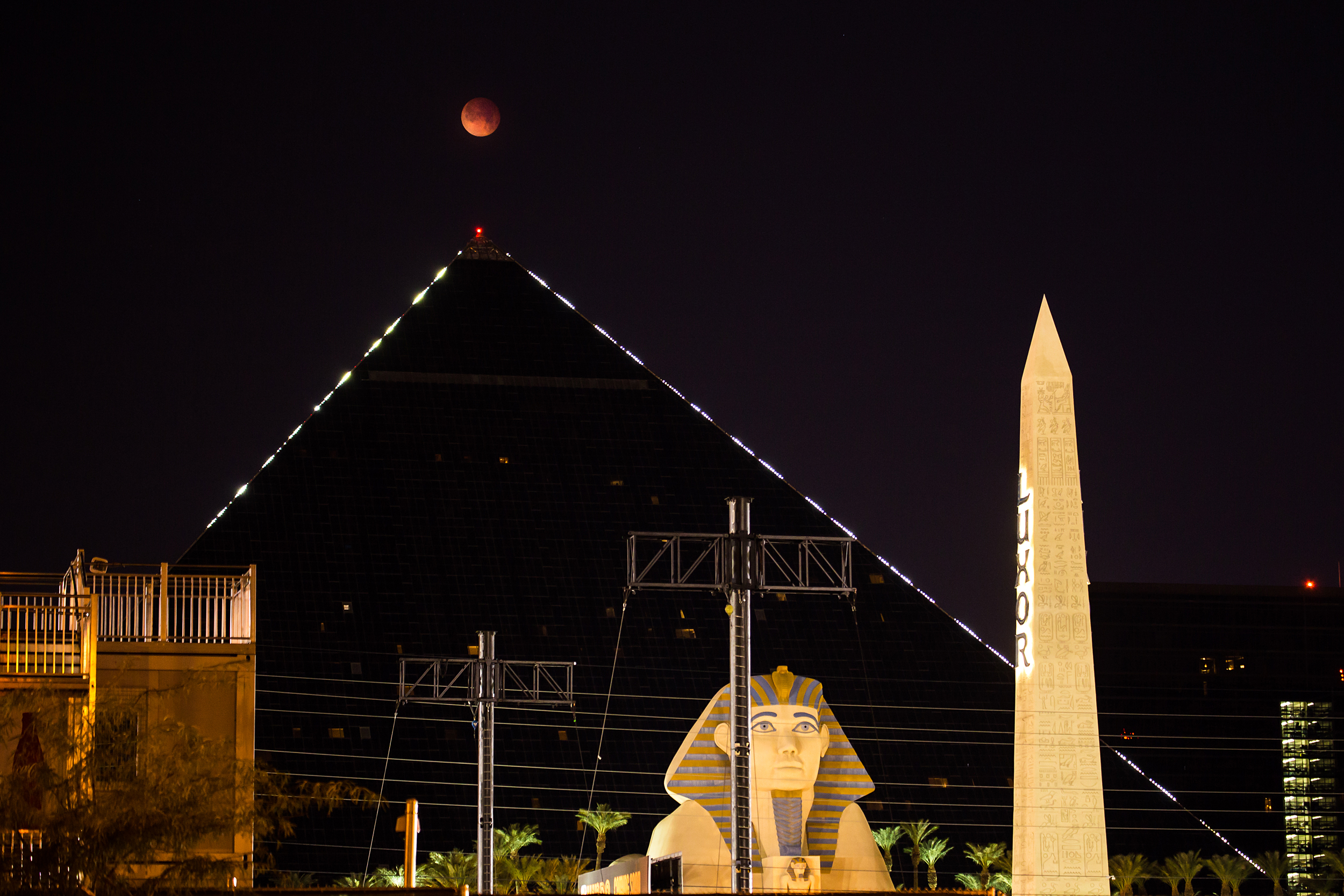
Tyler S. Leavitt submitted the image above, showing the eclipsed moon glowing red above the Luxor hotel in Las Vegas. [More Photos: The Super Blue Blood Moon of 2018]
During a lunar eclipse, the moon passes into the Earth's shadow. But sunlight streaming through the planet's atmosphere scatters onto the lunar surface, so rather than disappearing completely, the moon turns deep red. The exact color and visibility of the moon can vary among eclipses, according to E.C. Krupp, director of the Griffith Observatory in Los Angeles, who spoke with Space.com during an eclipse-viewing event at the observatory yesterday. [Related: When Will The Next Blood Moon Eclipse Occur?]
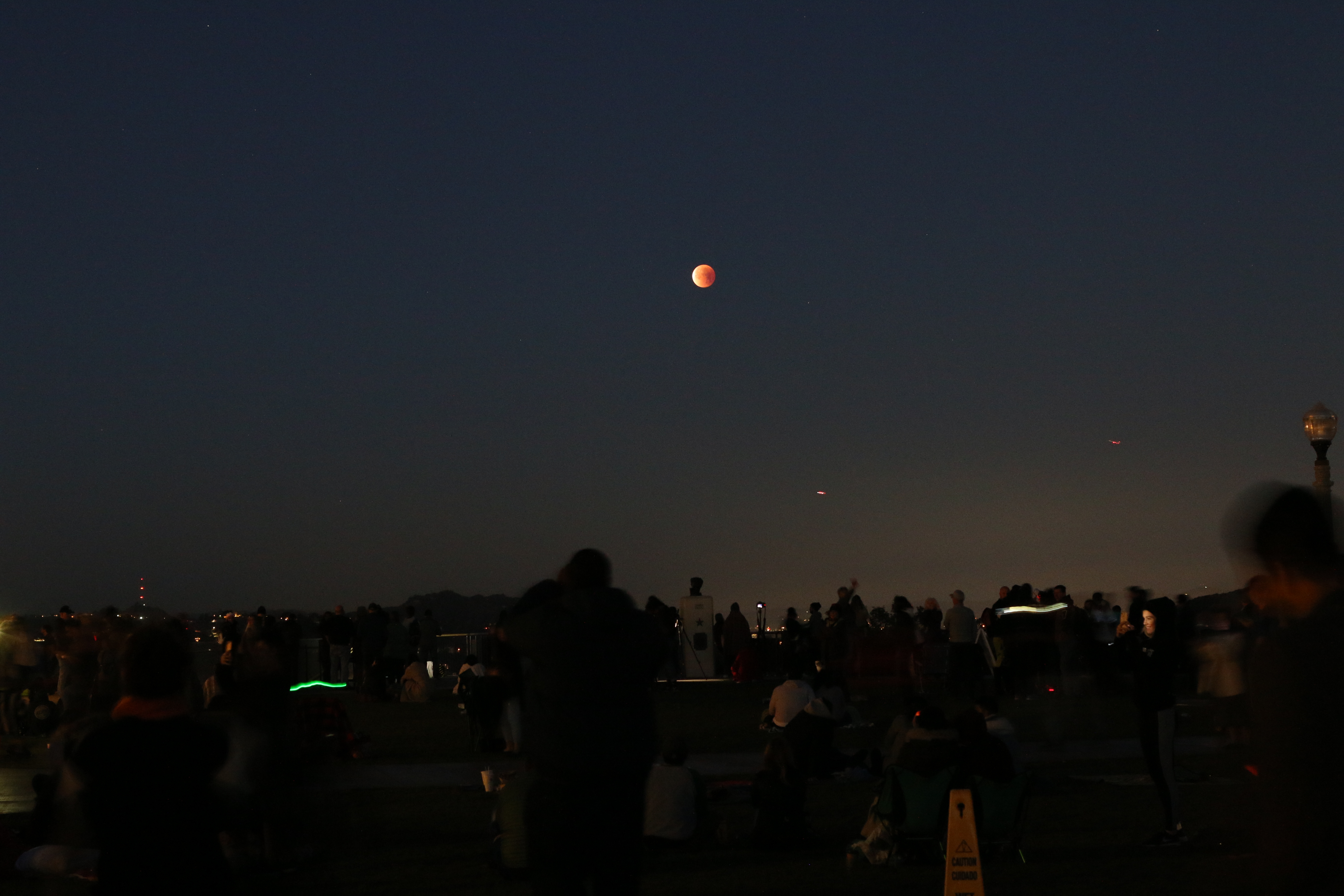
In the image above, sky photographer Maxim Senin captured the large crowd of people who gathered at the observatory before sunrise to watch the eclipse. The moon is a whitish dot just above the horizon.
"I could tell the crowd would be large, because even at 2:30 a.m., there was already a long line of cars waiting for the Griffith Park gates to open — not counting those who hiked for a mile uphill to the observatory," Senin told Space.com in an email. "It was fun: lots of cheering in the crowd as the eclipse began and when it reached totality. The weather cooperated too — relatively warm, no wind until sunrise, no typical marine layer or fog. Lots of free telescopes from [the Los Angeles Astronomical Society] and the observatory."
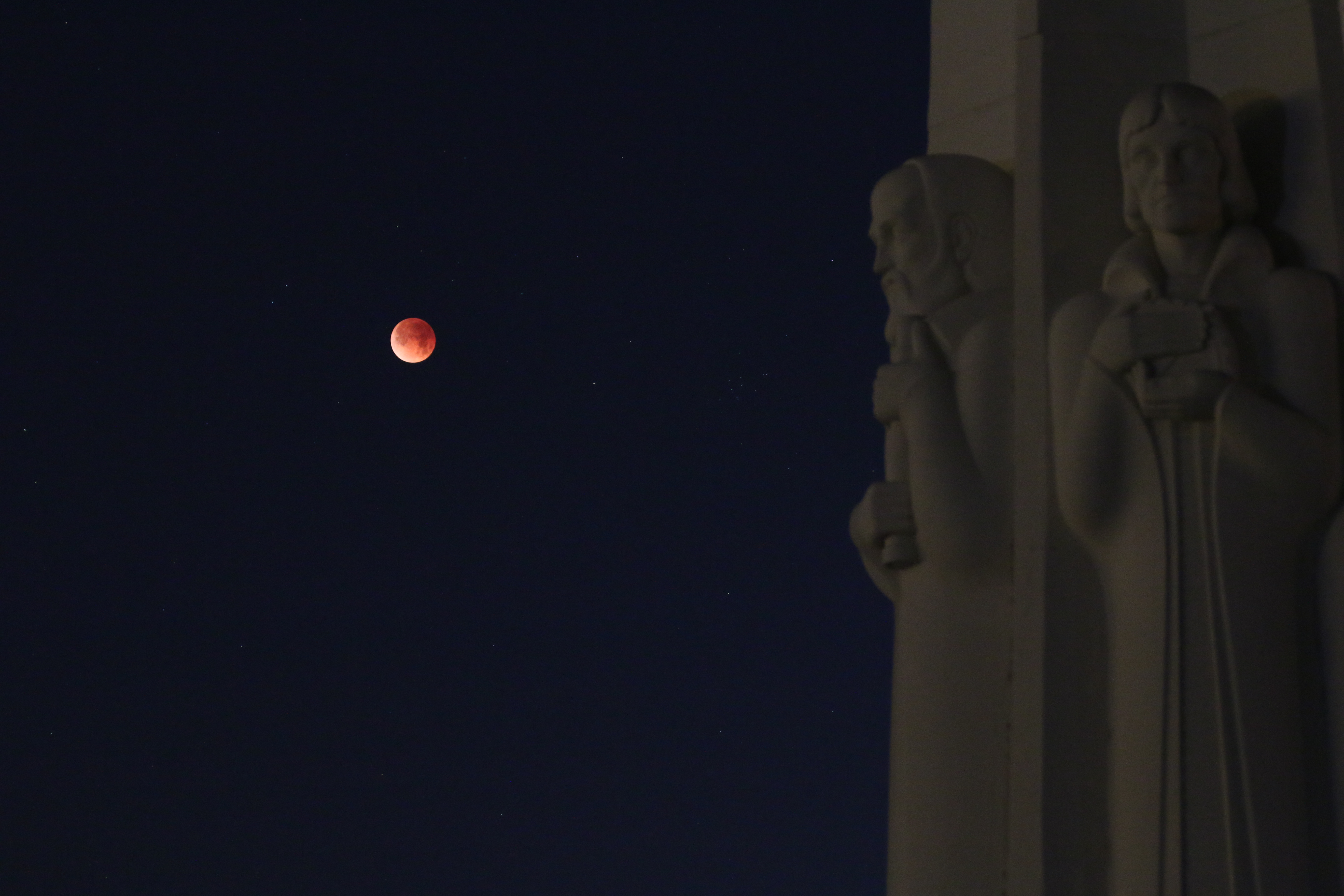
Maxim also captured this gorgeous snapshot of the moon behind a statue that stands in front of Griffith Observatory. The statue features six famous astronomers from history: Hipparchus, Nicolaus Copernicus, Galileo Galilei, Johannes Kepler, Isaac Newton and William Herschel.
Get the Space.com Newsletter
Breaking space news, the latest updates on rocket launches, skywatching events and more!
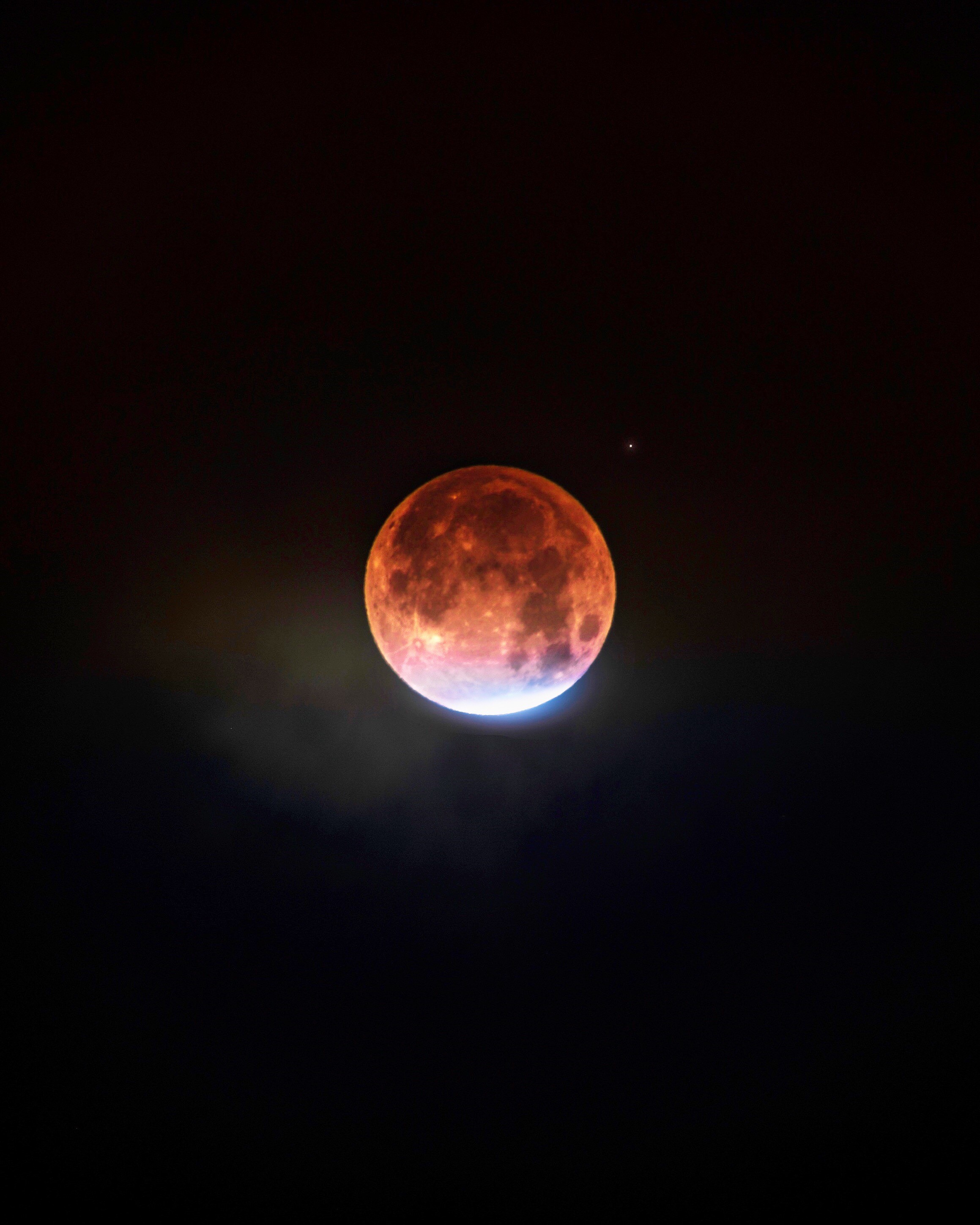
Capturing the reddish hue of the eclipse can require some smart camera work. The image above, taken by Jaxson Pohlman in Wichita, Kansas, captured a high contrast between the dark maria and the lighter regions on the lunar surface. There is also a high color contrast between the illuminated bottom edge of the moon and the darker region that remains in shadow, which creates a red, white and blue color scheme.
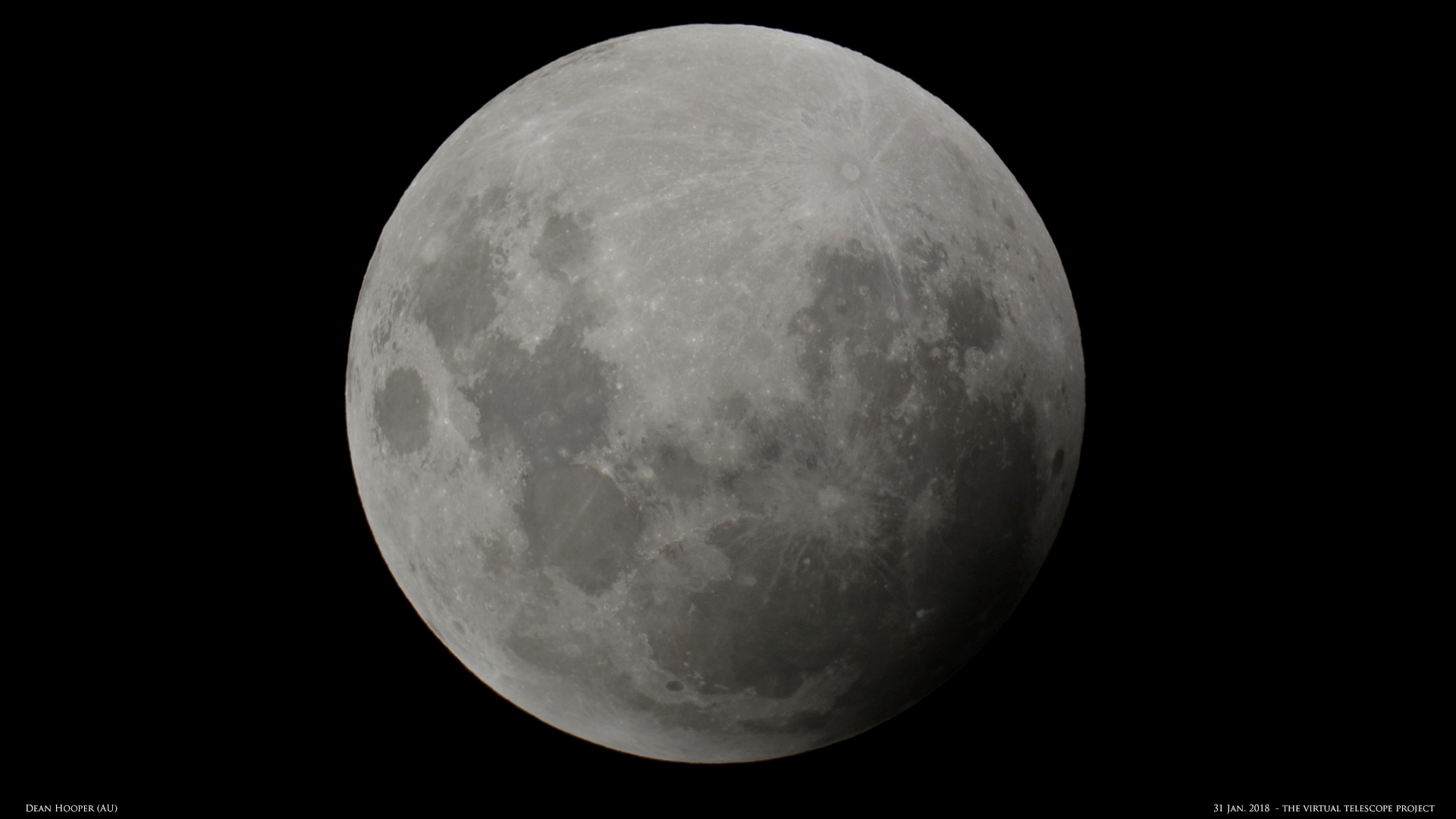
The deep red color is, of course, in stark contrast to the typically gray-hued lunar surface. When the moon first begins to dip into the Earth's inner shadow, or umbra, that shadow appears to "take a bite out" of the moon's edge, as seen in the image above, taken from Australia by Dan Hooper, courtesy of the Virtual Telescope. Only when the shadow covers a majority of the moon does that the red hue become apparent.
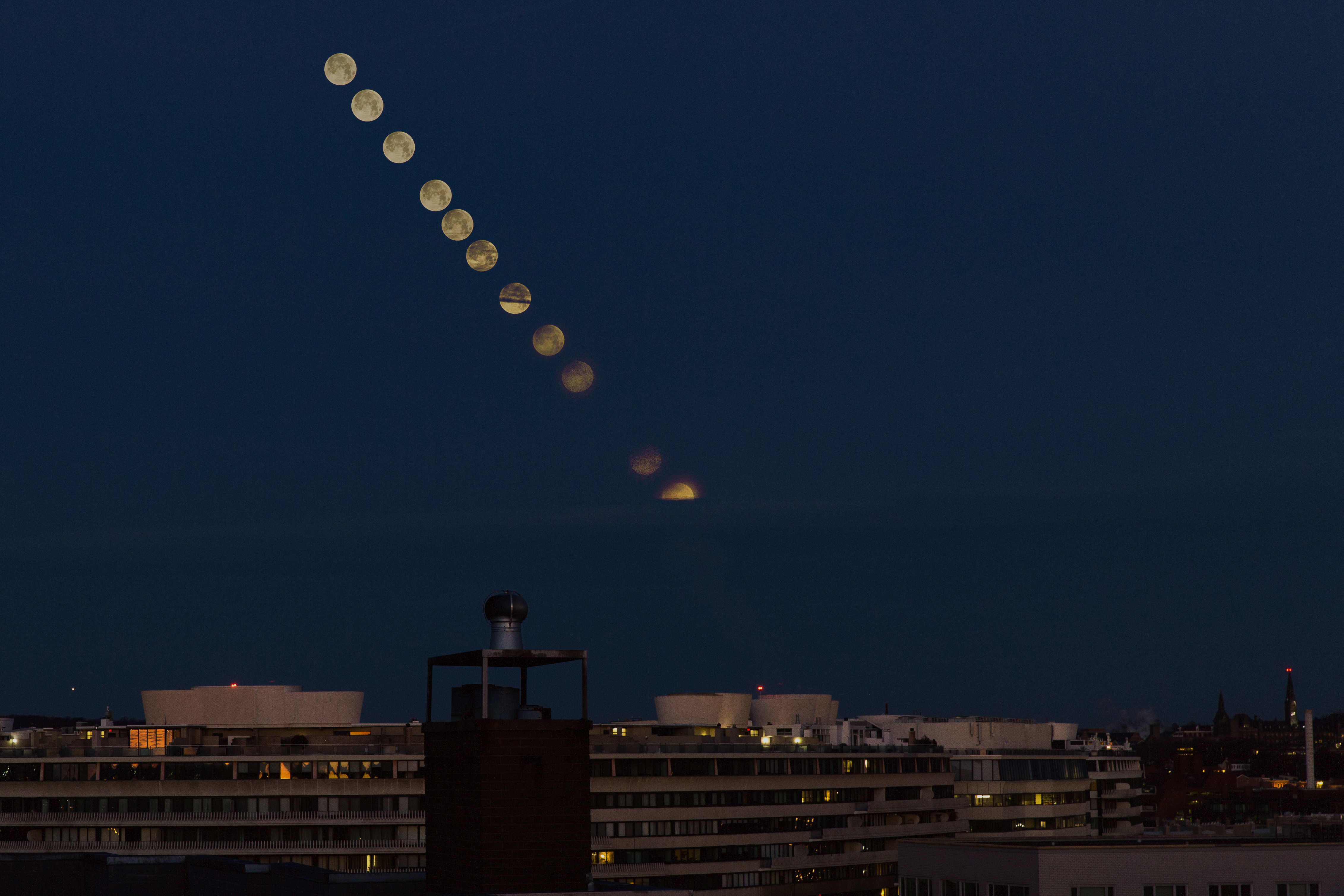
For most people in North America, the eclipse coincided with moonset. In Washington, D.C., photographer Harrison Jones captured this series of images of the moon as it sank into the horizon. The upper edge of the moon can be seen disappearing into shadow, but the moon dropped out of view before totality.
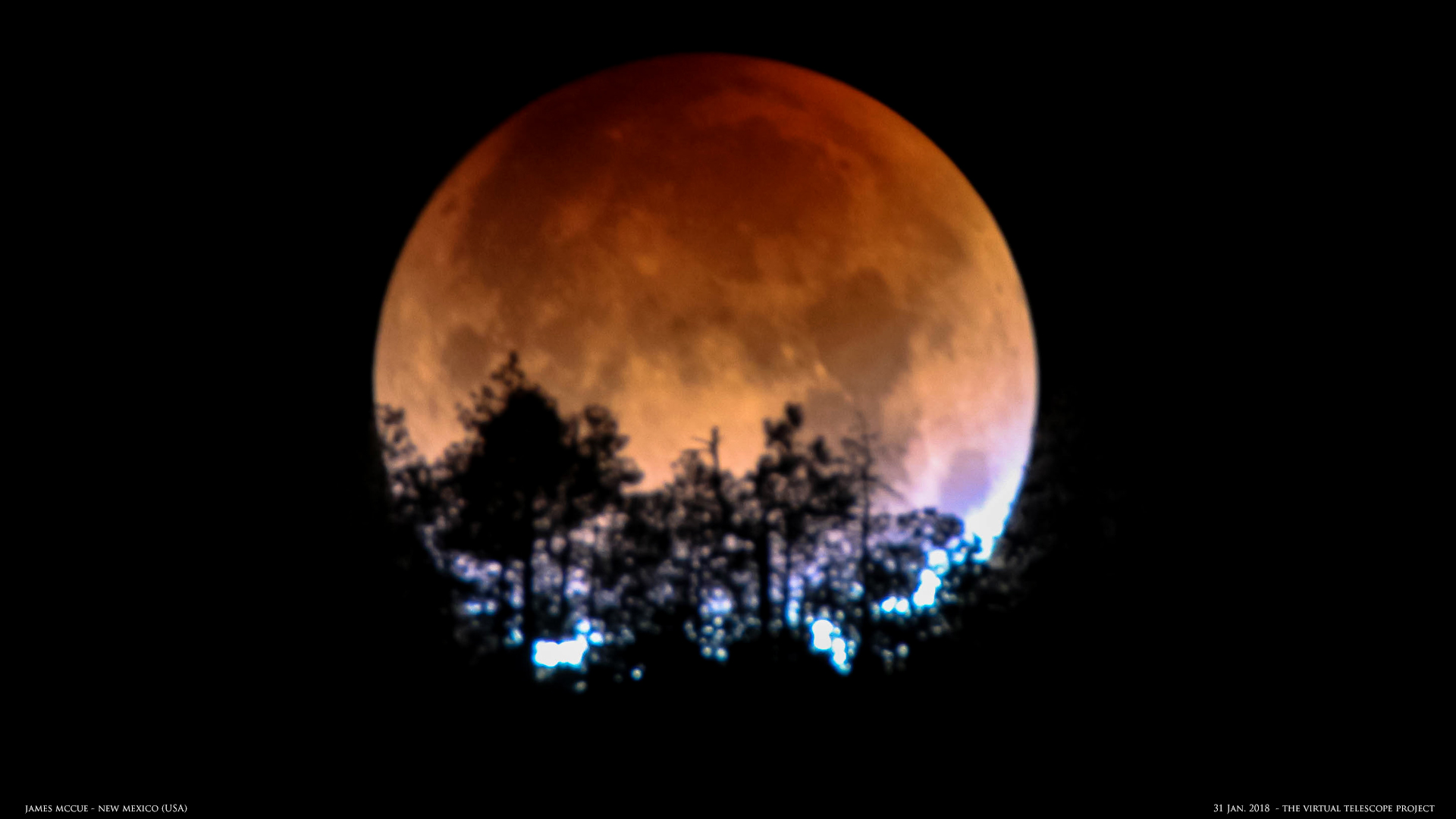
Above, trees appear in silhouette against a copper moon over New Mexico, in this image captured by James McCue, courtesy of the Virtual Telescope.
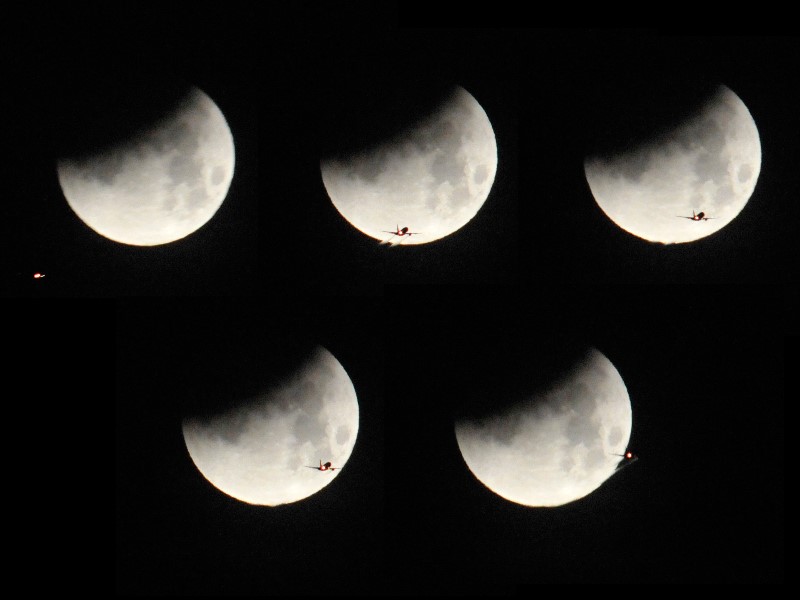
Finally, the image above shows a plane crossing in front of the moon as the shadow of the Earth begins to creep over the lunar surface. The image was captured by a skywatcher (and comedian) who submitted the image under the name Reverend Chicagodom.
"It was coincidence," Reverend Chicagodom said of this series of snapshots. "But being close to the flight paths of O'Hare and Midway airports, it was bound to happen."
Editor's note: If you captured an amazing photo or video of the total lunar eclipse and would like to share it with Space.com for a story or gallery, send images and comments to spacephotos@space.com.
Join our Space Forums to keep talking space on the latest missions, night sky and more! And if you have a news tip, correction or comment, let us know at: community@space.com.

Calla Cofield joined Space.com's crew in October 2014. She enjoys writing about black holes, exploding stars, ripples in space-time, science in comic books, and all the mysteries of the cosmos. Prior to joining Space.com Calla worked as a freelance writer, with her work appearing in APS News, Symmetry magazine, Scientific American, Nature News, Physics World, and others. From 2010 to 2014 she was a producer for The Physics Central Podcast. Previously, Calla worked at the American Museum of Natural History in New York City (hands down the best office building ever) and SLAC National Accelerator Laboratory in California. Calla studied physics at the University of Massachusetts, Amherst and is originally from Sandy, Utah. In 2018, Calla left Space.com to join NASA's Jet Propulsion Laboratory media team where she oversees astronomy, physics, exoplanets and the Cold Atom Lab mission. She has been underground at three of the largest particle accelerators in the world and would really like to know what the heck dark matter is. Contact Calla via: E-Mail – Twitter









